Food waste cement: A gingerbread house-style building option
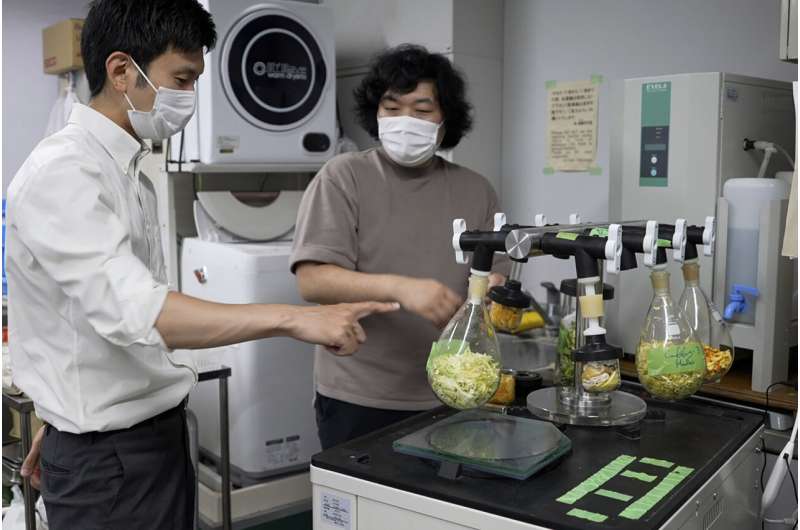
Ever dreamed of having a gingerbread house like Hansel and Gretel?
In the near future, edible houses may no longer just be found in fairy tales.
Tokyo University researchers Kota Machida and Yuya Sakai have developed a technology to transform food waste into potentially edible "cement" for construction use.
It's the world's first process for making cement entirely from food waste. The researchers say the tensile, or bending, strength of their product is nearly quadruple that of ordinary concrete.
Machida and Sakai say they hope to help reduce global warming, alleviating problems related to wasted food materials that emit methane when they rot while buried in landfills.
Sakai, an associate professor of Industrial Science, developed the technology while researching sustainable materials that could replace cement-based concrete. Cement production accounts for 8% of the world's carbon dioxide emissions, according to the think tank Chatham House.
He first developed a way to make concrete by subjecting pulverized wood particles to heat compression. The three-step process of drying, pulverization, and compression was done using simple mixers and compressors the researchers say can be bought on Amazon.
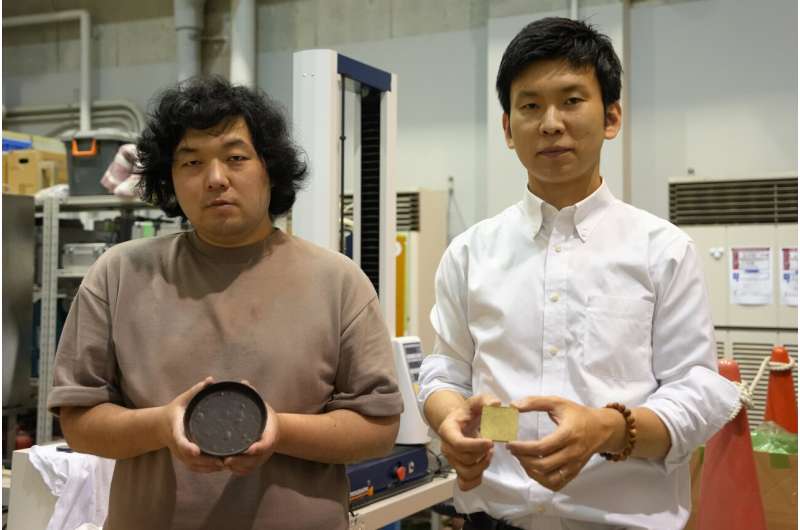
Sakai, with his student Machida, decided to do the same thing with food waste. Previous trials using food waste to make cement required plastics to be mixed in to get the materials to stick together.
After months of failures, they realized they could get the cement to bind by adjusting the temperature and pressure used.
"The most challenging part was that each type of food waste requires different temperatures and pressure levels," Sakai said.
Other experiments in using food waste in construction have mainly focused on using stuff such as coffee grounds or bio-waste ashes as filler in regular concrete.
Sakai and Machida say they have successfully made cement using tea leaves, orange and onion peels, coffee grounds, Chinese cabbage, and even lunchbox leftovers.
They've adjusted flavors with different spices and found the colors, scent and taste of the cement can be quite appealing. To be able to eat the material, a person would need to break it into pieces and boil it, Sakai said.
-
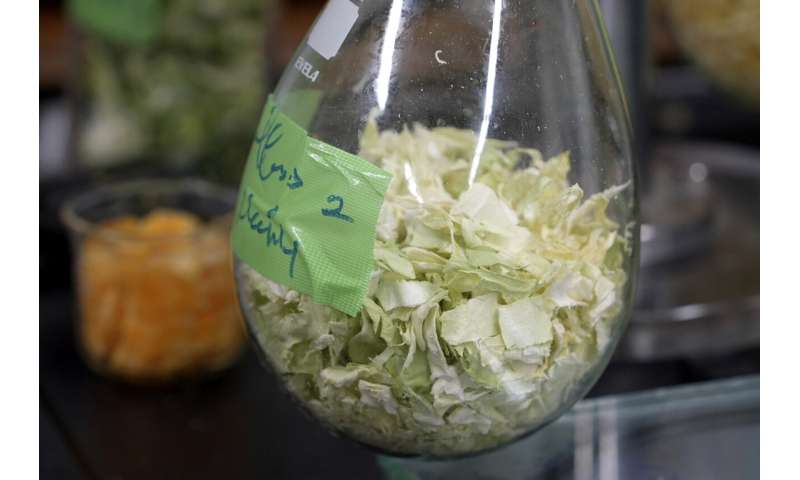
Chinese cabbage being dried is seen in glass flask at the laboratory of Tokyo University in Tokyo, on May 26, 2022. The university's researchers Kota Machida and Yuya Sakai have developed a technology that can transform food waste into “cement" for construction use. Credit: AP Photo/Chisato Tanaka -
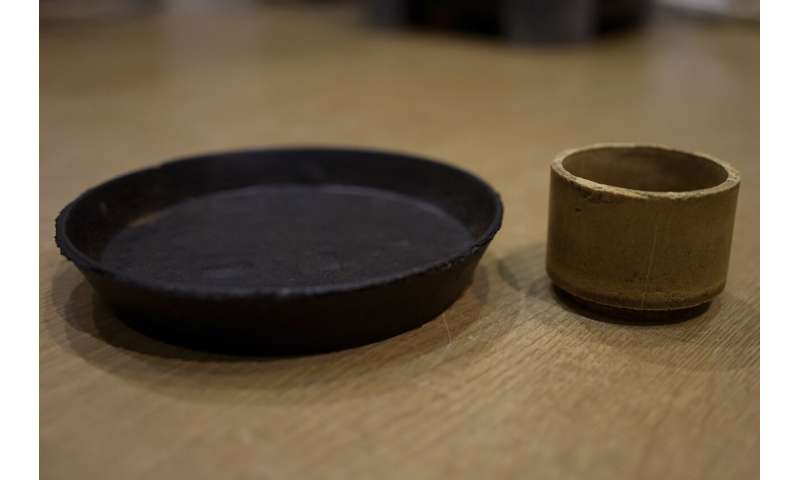
A plate and cup made from food cement are seen at the laboratory of Tokyo University in Tokyo on May 26, 2022. The university's researchers Kota Machida and Yuya Sakai have developed a technology that can transform food waste into “cement" for construction use. Credit: AP Photo/Chisato Tanaka -
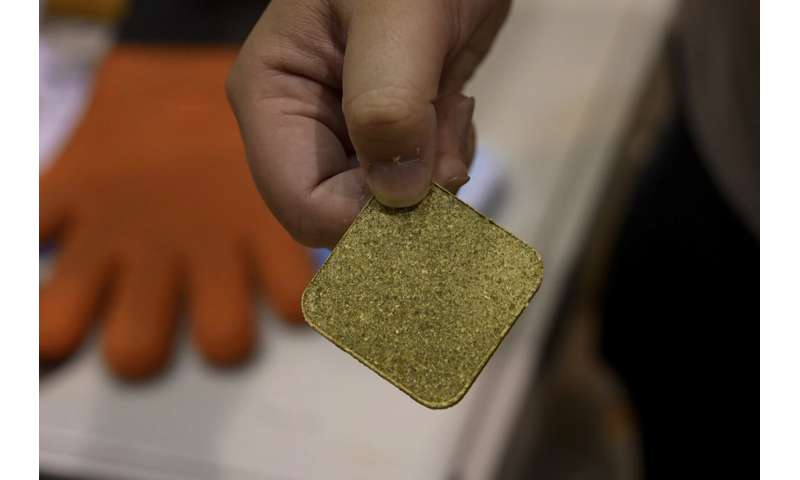
Food cement made out of dried cabbage is seen on May 26, 2022, at the laboratory of Tokyo University in Tokyo. The university's researchers Kota Machida and Yuya Sakai have developed a technology that can transform food waste into “cement" for construction use. Credit: AP Photo/Chisato Tanaka
To make the cement waterproof and protect it from being eaten by rodents and other pests, it might be coated with Japanese lacquer.
Food waste is a huge problem in Japan and worldwide. Japan produced around 5.7 million tons of edible food waste in 2019 and the government aims to reduce that around 2.7 million tons by 2030.
Machida started a company called Fabula Inc. last year with two of his childhood friends. They are working with other companies to make cups, cutlery, and furniture out of food cement.
Sakai says the process could be used to make edible makeshift housing for disasters.
-
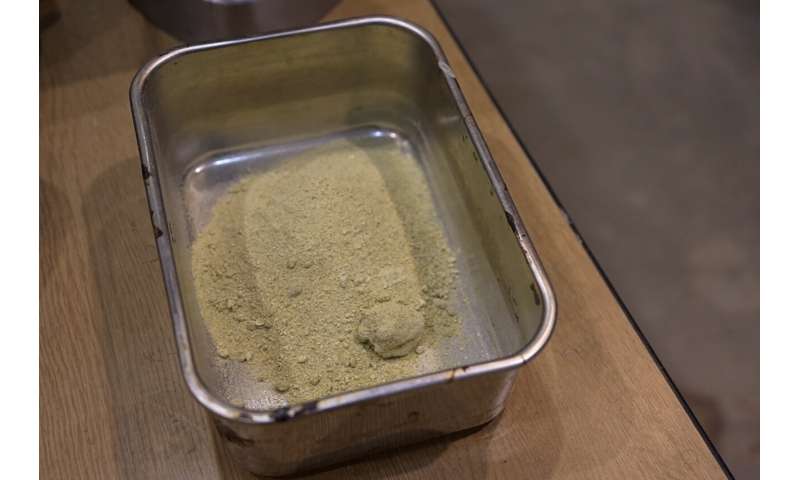
Particles of dried cabbage that were pulverized in a mixer are seen at the laboratory of Tokyo University in Tokyo, on May 26, 2022. The university's researchers Kota Machida and Yuya Sakai have developed a technology that can transform food waste into “cement" for construction use. Credit: AP Photo/Chisato Tanaka -
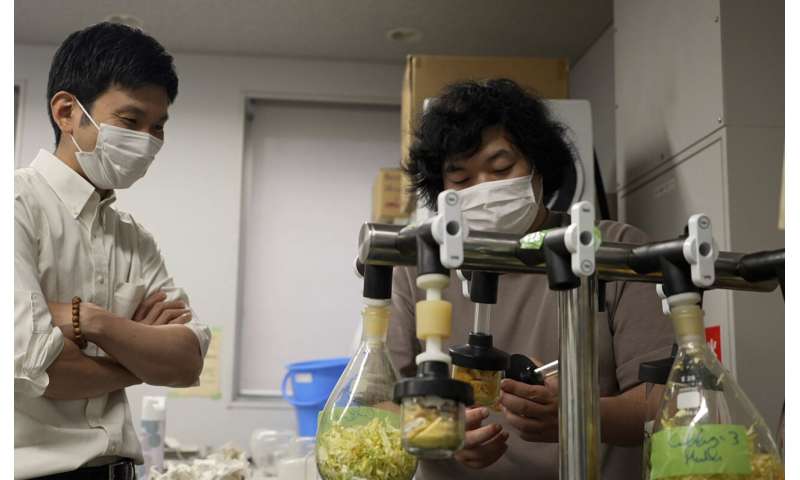
Tokyo University researchers Yuya Sakai, left, and Kota Machida, right, check on dried vegetables and fruit peels before pulverizing them to particles at their university laboratory in Tokyo, on May 26, 2022. The university researchers have developed a technology that can transform food waste into “cement" for construction use. Credit: AP Photo/Chisato Tanaka
"For example, if food cannot be delivered to evacuees, they could eat makeshift beds made out of food cement," he said.
The food cement can be reused and is biodegradable, so it can be buried when it is no longer needed.
"Our ultimate hope is that this cement replaces plastic and cement products, which have worse environmental impacts," said Machida.
© 2022 The Associated Press. All rights reserved. This material may not be published, broadcast, rewritten or redistributed without permission.















